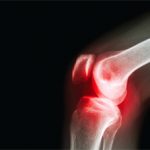Helena Alexanderson, PT, PhD, emphasized that even people with connective tissue disease with high levels of disease activity can tolerate and benefit from low- to moderate-intensity exercises.10 However, among individuals with interstitial lung disease involvement, supervised exercise of lower intensity is recommended along with close follow-up. Data suggest patients with severe fibromyalgia symptoms should be exercising with lower duration, frequency and intensity than typically prescribed.11
In her presentation, Emalie Hurkmans, PT, PhD, focused on how to overcome barriers to obtain and maintain optimal levels of exercise intensity. She suggested that future studies should examine how to make exercise programs more attractive, for example, by including elements that make people happy, such as music, doing good for others or exercising outdoors.
In her presentation, Maura Iversen, PT, DPT, SD, MPH, synthesized the data on adverse outcomes related to trials of exercise in adults with OA, RA and myositis. Dr. Iversen noted that individuals conducting clinical trials of exercise appear to use varying definitions of adverse events, some of which classify outcomes as reasons for drop out vs. adverse events (e.g., chest pain during exercise). Dr. Iversen noted that clinical trials of exercise in dermatomyositis and polymyositis appear to be highly controlled, of lower intensity and report the fewest adverse events. Whereas, exercise trials in OA and RA appear to have more risk for adverse events in the short term and long term, particularly among activities that involve joint loading (such as running). Dr. Iversen suggested a more uniform method for classifying adverse events in exercise trials be considered.
Rikke Helene Moe, PT, MSc, PhD, is a physical therapist and researcher at the National Advisory Unit on Rehabilitation in Rheumatology in Norway. She has been working in the field of rheumatology since 1998, both as a clinician and a researcher. She is active in the European League Against Rheumatism (EULAR), and in the EUMUSC.NET collaboration project supported by EULAR and the European Union. Her major research interests are in the fields of osteoarthritis and rheumatoid arthritis, especially in the areas of functioning, disability and health.
References
- Hagen KB, Dagfinrud H, Moe RH, et al. Exercise therapy for bone and muscle health: An overview of systematic reviews. BMC Med. 2012 Dec 19;10:167.
- Dagfinrud H, Halvorsen S, Vollestad NK, et al. Exercise programs in trials for patients with ankylosing spondylitis: Do they really have the potential for effectiveness? Arthritis Care Res (Hoboken). 2011 Apr;63(4):597–603.
- Garber CE, Blissmer B, Deschenes MR, et al. American College of Sports Medicine position stand. Quantity and quality of exercise for developing and maintaining cardiorespiratory, musculoskeletal, and neuromotor fitness in apparently healthy adults: Guidance for prescribing exercise. Med Sci Sports Exerc. 2011 Jul;43(7):1334–1359.
- EULAR. Abstract archive.
- Hochberg MC, Altman RD, April KT, et al. American College of Rheumatology 2012 recommendations for the use of nonpharmacologic and pharmacologic therapies in osteoarthritis of the hand, hip, and knee. Arthritis Care Res (Hoboken). 2012 Apr;64(4):465–474.
- Stavropoulos-Kalinoglou A, Metsios GS, Veldhuijzen van Zanten JJ, et al. Individualised aerobic and resistance exercise training improves cardiorespiratory fitness and reduces cardiovascular risk in patients with rheumatoid arthritis. Ann Rheum Dis. 2013 Nov;72(11):1819–1825.
- Yu CA, Rouse PC, Veldhuijzen Van Zanten JJ, et al. Subjective and objective levels of physical activity and their association with cardiorespiratory fitness in rheumatoid arthritis patients. Arthritis Res Ther. 2015 Mar 13;17:59.
- Sveaas SH, Berg IJ, Provan SA, et al. Efficacy of high intensity exercise on disease activity and cardiovascular risk in active axial spondyloarthritis: A randomized controlled pilot study. PloS One. 2014 Sep 30;9(9):e108688.
- Alemo Munters L, Dastmalchi M, Katz A, et al. Improved exercise performance and increased aerobic capacity after endurance training of patients with stable polymyositis and dermatomyositis. Arthritis Res Ther. 2013 Aug 13;15(4):R83.
- Alexanderson H, Munters LA, Dastmalchi M, et al. Resistive home exercise in patients with recent-onset polymyositis and dermatomyositis—A randomized controlled single-blinded study with a 2-year followup. J Rheumatol. 2014 Jun;41(6):1124–1132.
- Garcia-Hermoso A, Saavedra JM, Escalante Y. Effects of exercise on functional aerobic capacity in adults with fibromyalgia syndrome: A systematic review of randomized controlled trials. J Back Musculoskelet Rehabil. 2014 Nov 18 [Epub ahead of print].



